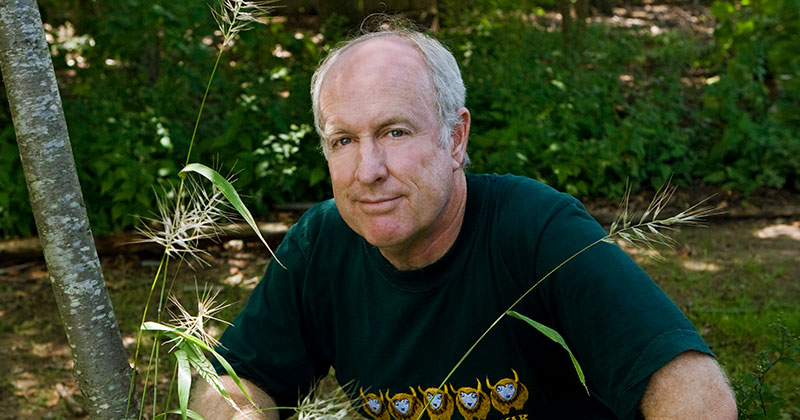


Saving the Earth one backyard at a time
The circle of life begins with the smallest of creatures.
April 21, 2020
Ignored and misunderstood by most, insects are a source of fascination and exploration for Prof. Doug Tallamy, entomologist and environmental optimist. Here, he talks about how to repair declining wildlife populations—and why you are nature’s best and possibly only hope.
What makes insects interesting?
They’re a major lifeform running our ecosystem. We’d be dead without them. Ninety percent of flowering plants would disappear. Nutrients would not be recycled. Birds wouldn’t have a source of food. The global insect decline [40 percent—with a rate of extinction that is eight times faster for insects than for mammals, birds and reptiles] would lead to ecosystem collapse. Our perception is that insects eat our crops and make us sick, but the ones running the world aren’t doing those things.
How can planting more native trees help?
Roughly 90 percent of all bugs eat and reproduce on only certain native plant species, specifically those with whom they share an evolutionary history. Plants are vital to the ecosystem in your yard, but we’re excluding the life we need around us.
And yet, you’re hopeful.
My message is: You can help save the Earth. You can do something and see the results. You can plant an oak tree in your yard and see the life it brings. You can start counting the birds rearing their young there. It’s an approach that empowers people to feel like they’re making a difference because they are. And it’s easy! You put the plants in, and it happens. You just have to choose the right ones.
How do we know what plants to choose?
All native plants are not equal. It’s a matter of productivity—of plants that, if removed, would collapse the food web. That includes oaks, cherries, birches, hickories, willows. The top-herbaceous plant that feeds caterpillars is golden rod, which feeds 110 species. Oaks feed 557 species. Big difference. But also, there’s room for compromise. Plant choice matters. You can have your crape myrtle—as long as it’s less than 30% biomass in your yard. [Editor’s note: Visit Tallamy’s website, BringingNatureHome.net, to find the right plants for your backyard.]
What are common backyard culprits?
Get rid of invasive ornamentals—burning bush, Bradford pear, autumn olive, privet. All of those things escape into our natural areas. They don’t stay where you plant them.
Is the cultural shift and increase in native plants happening fast enough?
We’re not there, but we’re heading in the right direction.
What’s the Cliffs Notes version of your newest book, Natures Best Hope?
What is nature’s best hope? You. There’s an Earth stewardship responsibility that we have as citizens of the planet. We can no longer leave conservation to the conservationists. There aren’t enough—by far. We’re also the only species that consistently fouls our own nest, and we think we can do it forever with no consequence. That’s the hunter-gatherer mentality of wrecking our habitat and moving on. But there’s no place to move anymore.
Contact Us
Have a UDaily story idea?
Contact us at ocm@udel.edu
Members of the press
Contact us at 302-831-NEWS or visit the Media Relations website


